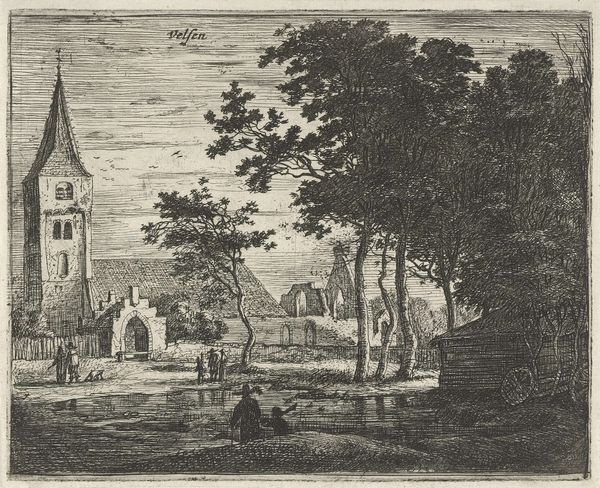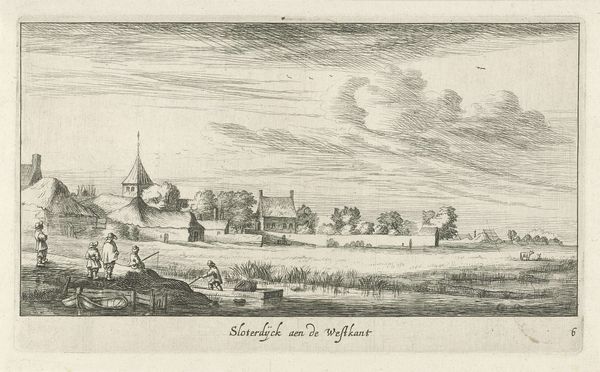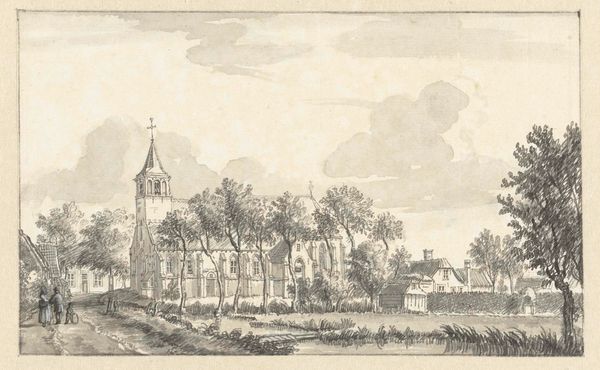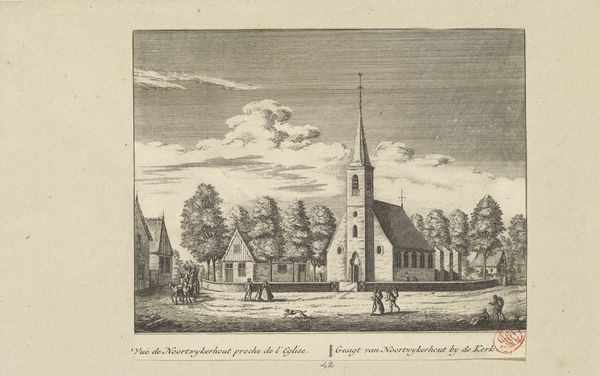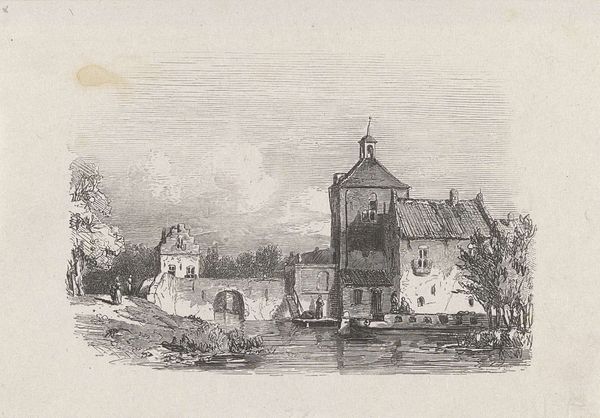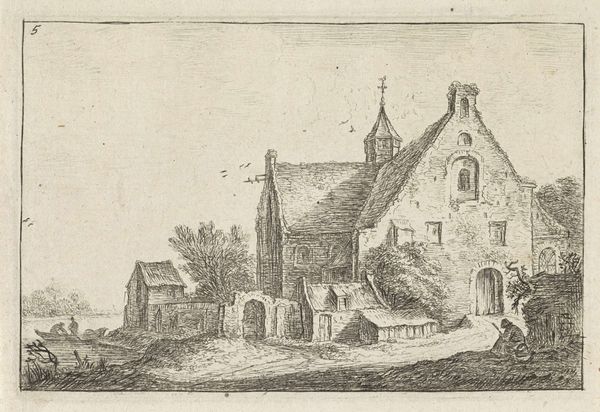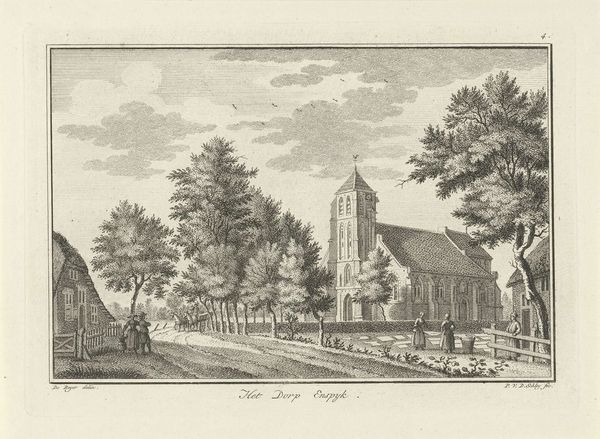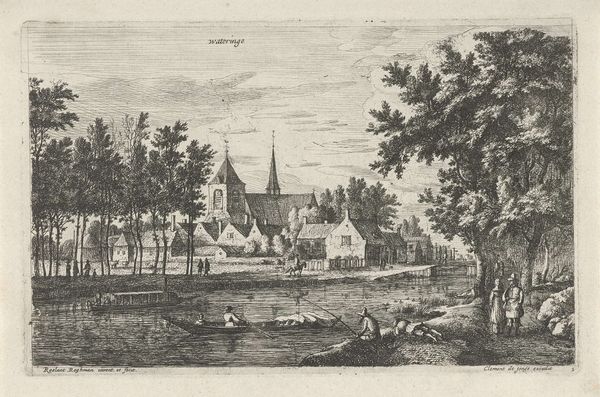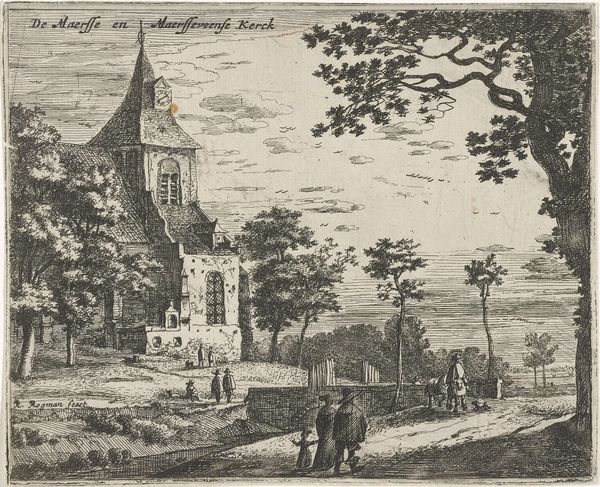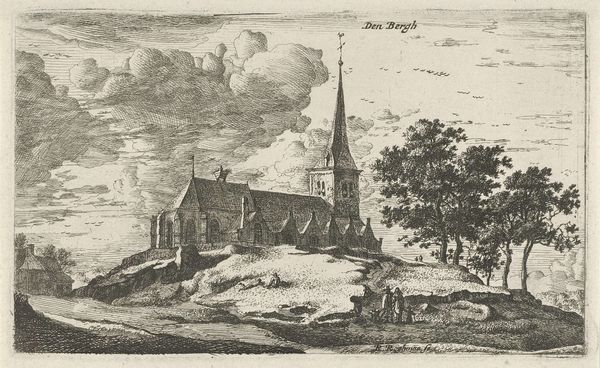
print, etching, engraving
#
dutch-golden-age
# print
#
etching
#
landscape
#
cityscape
#
engraving
Dimensions: height 80 mm, width 115 mm
Copyright: Rijks Museum: Open Domain
Editor: This print, titled "Gezicht op het Witte Kerkje te Noordwijkerhout, 1634" by Abraham Rademaker, looks like an etching or an engraving. It gives a sense of peaceful, rural life. The tiny figures make me wonder about the church. How should we understand its visual language? Curator: It's fascinating to see how Rademaker captures not just the image but the essence of this Dutch village church. Think about churches in the 17th and 18th centuries: they were the spiritual and often social hearts of communities. Look closer. What do you notice about the building itself? Is it all intact? Editor: Well, parts look damaged, maybe even ruined? Curator: Precisely. Consider this alongside the daily life depicted. Is there a contrast, perhaps a commentary on resilience or change? The villagers, even against a backdrop showing ruin, are active, aren’t they? Doesn’t it strike you as curious that they are carrying on regardless of these potential ruins? The church as a symbol carries echoes of belief and the social order that perhaps is shifting here. Editor: It does make you think about cycles of destruction and renewal, doesn’t it? Like the enduring spirit of community over crumbling structures. Curator: Yes, and even more broadly, about the cyclical nature of time itself. The image encodes memory and the promise of persistence. Editor: So, what looked at first glance like a simple landscape is loaded with reflections on time, faith, and community! I see how symbols operate across centuries.
Comments
No comments
Be the first to comment and join the conversation on the ultimate creative platform.
